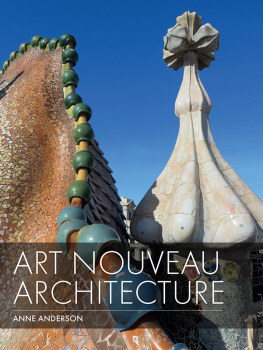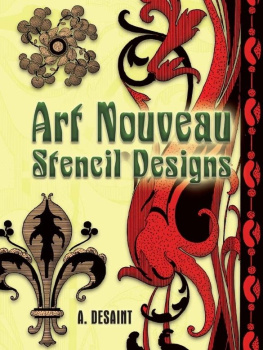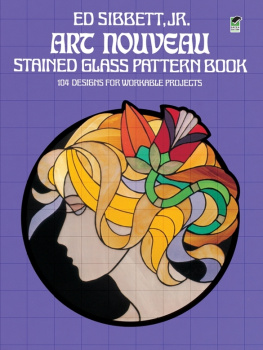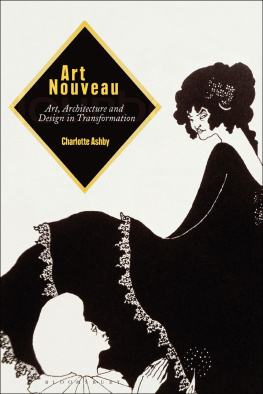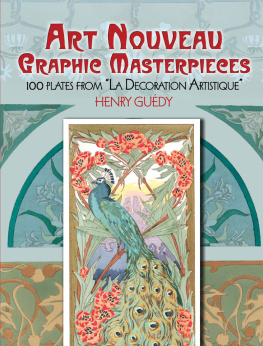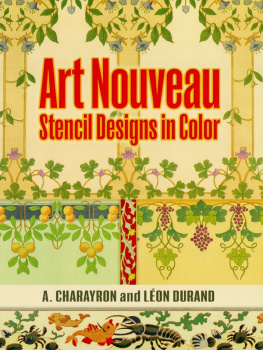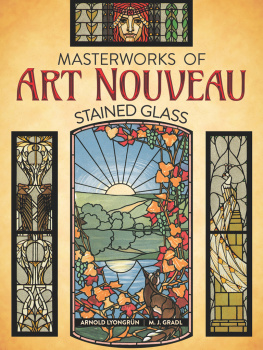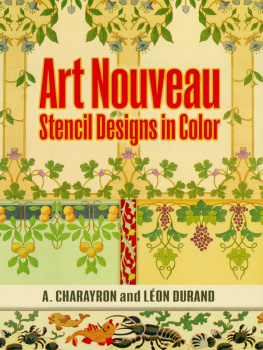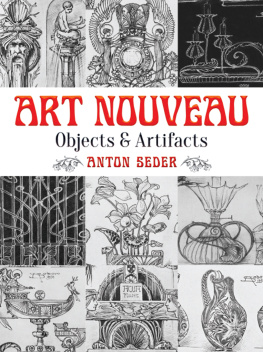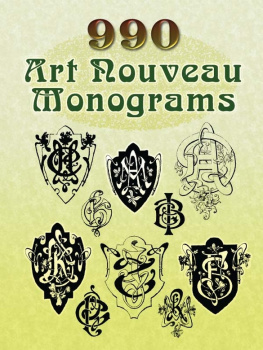Page List
ART NOUVEAU
ARCHITECTURE
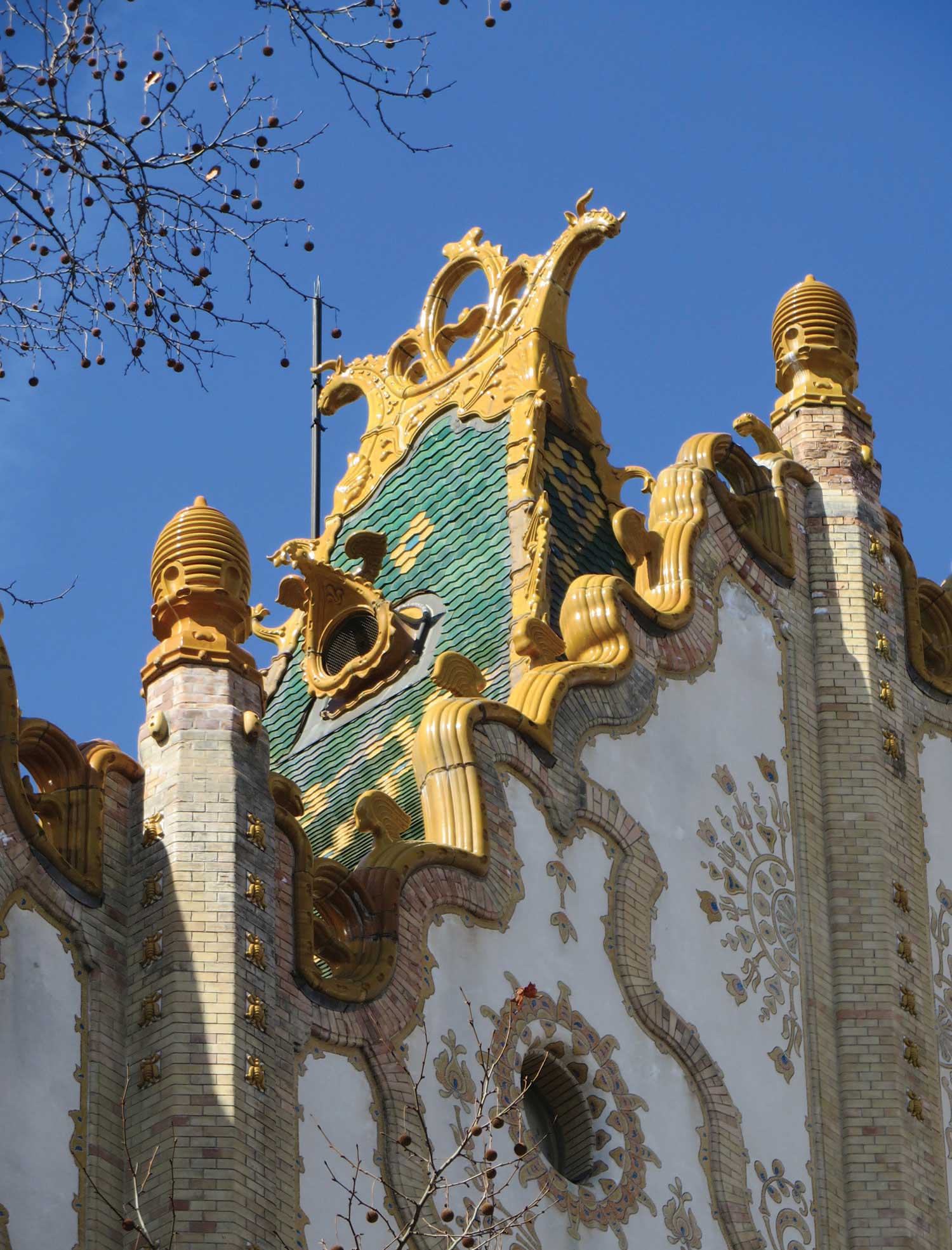
dn Lechner, with Sndor Baumgarten, Postal Savings Bank, Hold u. 4, Pest (1900-01)
ART NOUVEAU
ARCHITECTURE
ANNE ANDERSON

First published in 2020 by
The Crowood Press Ltd
Ramsbury, Marlborough
Wiltshire SN8 2HR
www.crowood.com
This e-book first published in 2020
Anne Anderson 2020
All rights reserved. This e-book is copyright material and must not be copied, reproduced, transferred, distributed, leased, licensed or publicly performed or used in any way except as specifically permitted in writing by the publishers, as allowed under the terms and conditions under which it was purchased or as strictly permitted by applicable copyright law. Any unauthorised distribution or use of this text may be a direct infringement of the authors and publishers rights, and those responsible may be liable in law accordingly.
British Library Cataloguing-in-Publication Data
A catalogue record for this book is available from the British Library.
ISBN 978 1 78500 768 2
Acknowledgements:
Many thanks to Scott Anderson, my husband, for helping with the images. They were mostly taken by both of us on our Travel Editions tours. The image of the Villino Ruggeri, Pesaro, was kindly supplied by Foto di Andrea Speziali, Associazione Italia Liberty http://www.italialiberty.it
Introduction
T HE ART NOUVEAU CITY ROUTE LISTS OVER seventy cities that judge their Art Nouveau legacy to be of cultural significance. These cities range as far west as Lima and Mexico City and to the east, Moscow and Kecskemt. Recognizing Art Nouveaus millennial moment, the route was founded in 2000; the pan-world significance of Art Nouveaus quest for modernity on the eve of the twentieth century was also recognized in a major exhibition at the V&A. The growing enthusiasm for Art Nouveau, amongst both academics and tourists, had already resulted in the founding of the European Reseau Art Nouveau Network (RANN) in 1998. This currently comprises twenty-three European cities that are all committed to protecting, studying and raising awareness of their remarkable heritage: among these are lesund, Norway; Averio, Portugal; Bad Nauheim, Germany; Barcelona, Catalonia; Brussels, Belgium; Glasgow, Scotland; Havana, Cuba; Helsinki, Finland; La Chaux-de-Fonds, Switzerland; Ljubljana, Slovenia; Nancy, France; Regione Lombardia (Milan and Lake Como), Italy; Szeged, Southern Hungary; Riga, Latvia; and Terrassa, Catalonia.
Brussels, the cradle of Art Nouveau, Barcelona, Glasgow and Riga have all benefited from this fervour for Art Nouveau with specialist tours and architectural walks abounding. Many books, both general surveys and detailed monographs on individual architects, have been published. Previous writers have dealt with the new art and architecture of the 1890s1900s by city or country. This approach has been taken in order to discuss the local conditions, cultural, economic and political, that stimulated the search for a modern idiom.
However, given the overwhelming number of cities in many different countries in the Art Nouveau Route, my appraisal must be selective. To a certain extent it concentrates on cities I have come to know well: Brussels, Paris, Nancy, Budapest, Barcelona, Milan, Turin, Porto and Aveiro. It evaluates the new architectural idioms through many different building types ranging from civic and commercial to domestic. By looking at houses and apartments, schools and hospitals, and shops and restaurants, we can see how architects responded to the demands of modern life. Greater attention has also been given to the role played by the so-called applied arts; stained glass, ceramics and metalwork. Many surveys fail to mention the many artisans and craftsmen whose work made Art Nouveau, or Jugendstil as it is known in German-speaking countries, so distinctive.
Nancy) are followed by Jugendstil (Darmstadt, Hagen, Weimar) and Secession (Munich and Vienna). Magyar Szecesszi, Catalan Modernisme, Italian Stile Liberty and Portugals Arte Nova expand the field into areas often neglected in general surveys. Moreover, much of the current research is not published in English, making access to information doubly hard.
Allied to literary Decadence and Symbolism in the fine arts, the New Art sought to express the anxieties aroused by modern life. A symbolic language evolved, based on flora and fauna that expressed complex ideas in a visual form. Artists drew on a wide range of ancient sources, myths and legends as well as the Bible, to create a symbolic language that was universal. Exploring the concept of architecture as language, unpicks these motifs and explains their meaning.
Understandably, the new architecture was driven by innovative technologies and materials (iron/steel, concrete, glass and ceramics). The role of new building materials is covered in ; the New Art owes its very existence to mass-produced materials, industrial processes and technical innovations. The stress laid on ornamentation, stained glass, ceramics and metalwork brought the applied arts closer to the fine arts. Wider opportunities led many artists into different fields of endeavour; artists no longer simply painted, they designed posters, textiles, tiles and stained glass. As polymaths, artist-craftsmen strove to be like their Renaissance forebears.
singles out iconic buildings that mark a turning point or epitomize the style of an outstanding architect, landmarks in the literal sense. Many iconic buildings have been lost, through wartime destruction or post-war development. During the 1950s and 1960s, when all things Victorian were scorned, it was hard to protect buildings from developers and speculators. The most famous victim was Victor Hortas Maison du Peuple or the Peoples House (189699), Brussels. Commissioned by the Belgian Workers Party, the Maison du Peuple embodied Art Nouveaus democratic ethos or Art for the People. With offices, meeting rooms and an auditorium that could seat 300 people, it was a true ship of socialist ideology. It spawned a Peoples House in every Belgian city; the notion also inspired the Municipal House in Prague (190512, Osvald Polvka and Antonn Balnek), which combines a concert hall with restaurants. The demolition of Hortas Maison du Peuple in 1965, despite an international protest mounted by over 700 architects, has been condemned as an architectural crime and the assassination of Victor Horta. Among the other great losses must be counted August Endells Elvira Studio, Munich (1898), destroyed by allied bombing in 1944 and much more recently Charles Rennie Mackintoshs Glasgow School of Art (18961906) destroyed by fire in 2014 and 2018.
Finally, the Epilogue considers how Art Nouveau/Jugendstil evolved into post-war intellectually driven Modernism, as epitomized by the Bauhaus and fashionable Art Deco.
Notes
Massini, Lara-Vinca, Art Nouveau, London: Thames and Hudson, 1984; Greenhalgh, Paul (ed.), Art Nouveau 18901914, London: V&A Publications, 2000; Russell, Frank (ed.), Art Nouveau Architecture, London: Academy Editions, 1979; Sembach, Klaus Jurgen, Art Nouveau; Utopia: Reconciling the Irreconcilable, Kln: Benedikt Taschen, 1991; Fahr-Becker, Gabriele, Art Nouveau

